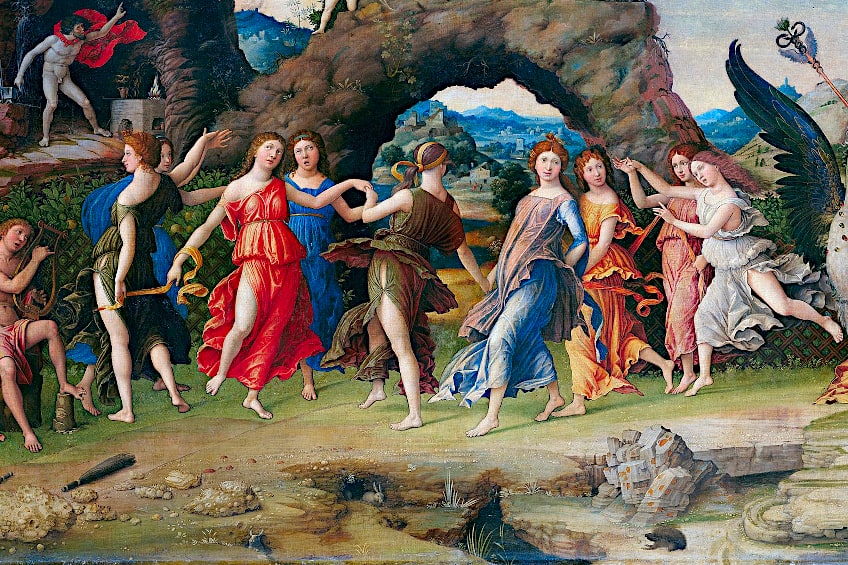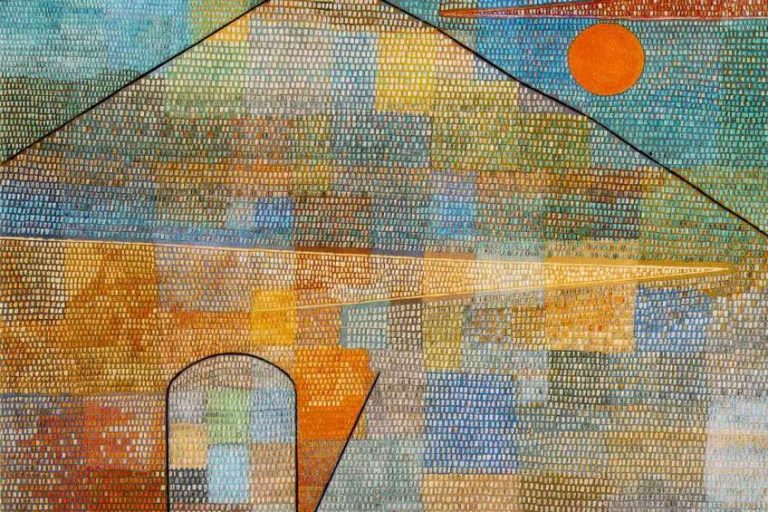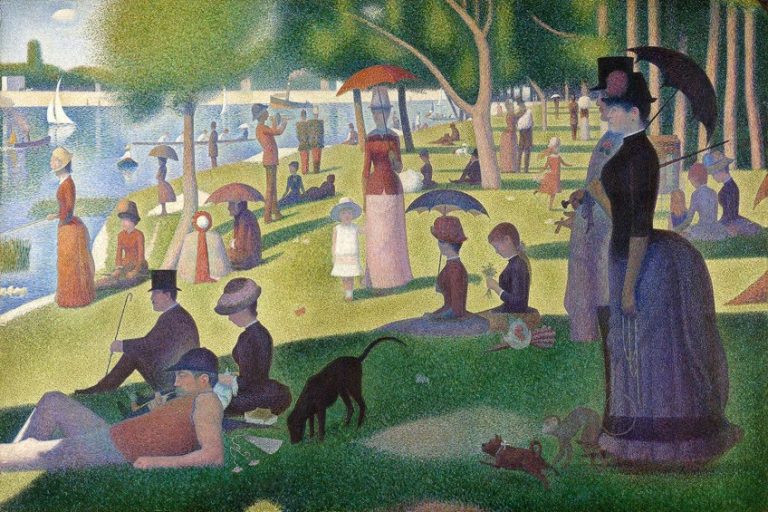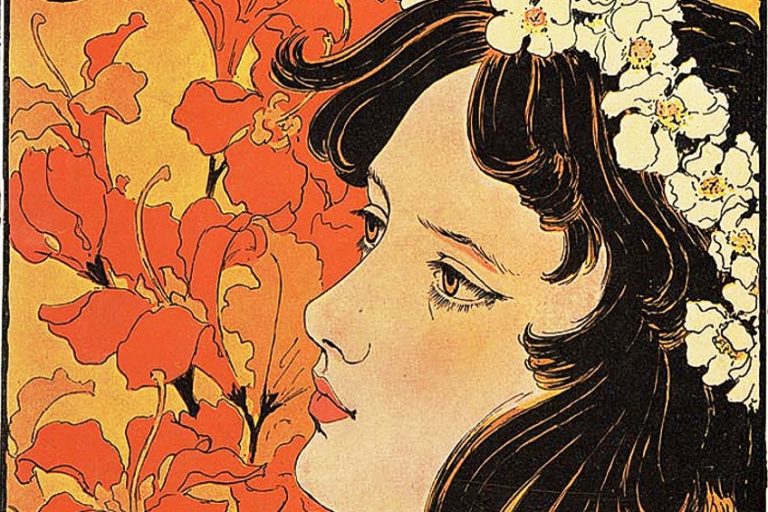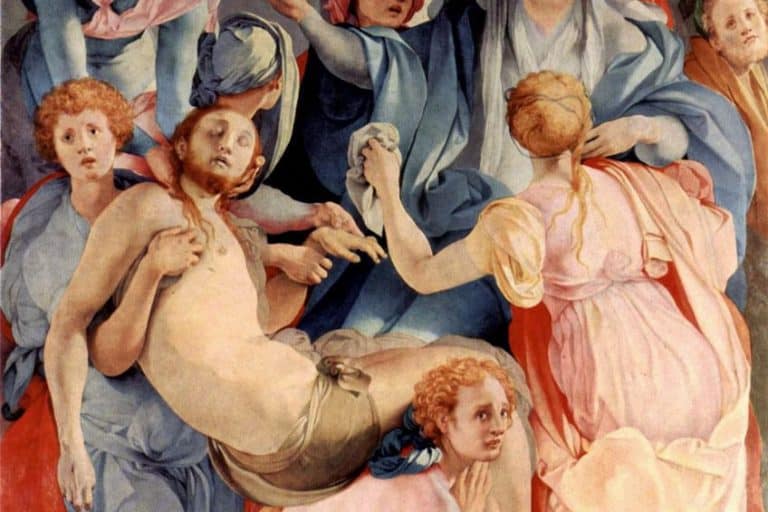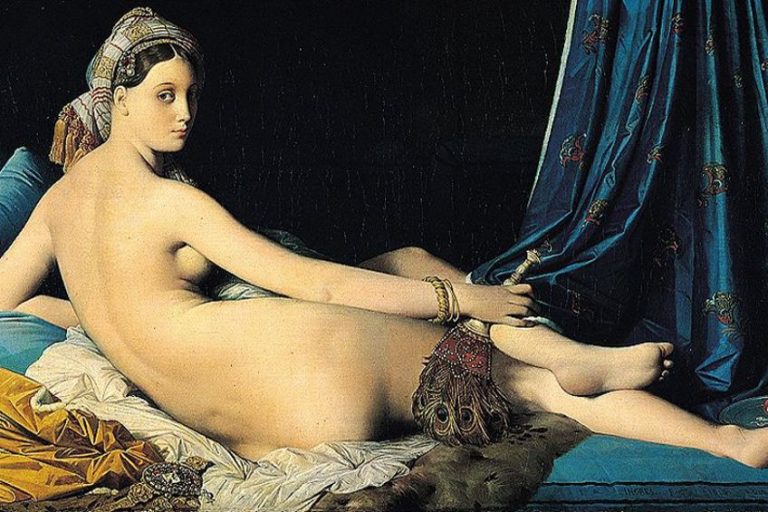The Muses in Greek Mythology – Patrons of the Arts and Sciences
The Muses in Greek mythology are an important group of goddesses who were seen as the overseers of the arts and sciences. For this reason, they have had a profound impact on the arts over the centuries. Today, we will discuss the names of the Muses, what each of them is associated with, how they were worshiped, who they may have inspired, and a number of other aspects of these nine goddesses of the arts. If you’re interested in the Muses in Greek mythology, keep reading to learn more!
A Look at the Muses in Greek Mythology
The Muses are the nine goddesses of the arts and sciences from ancient Greek mythology. They were gods in their own right, and they were often seen as the inspiration behind many great pieces of art. That was, typically, their role in ancient Greek culture. They were said to inspire poets, singers, and philosophers and were therefore the patrons of the arts and the sciences.
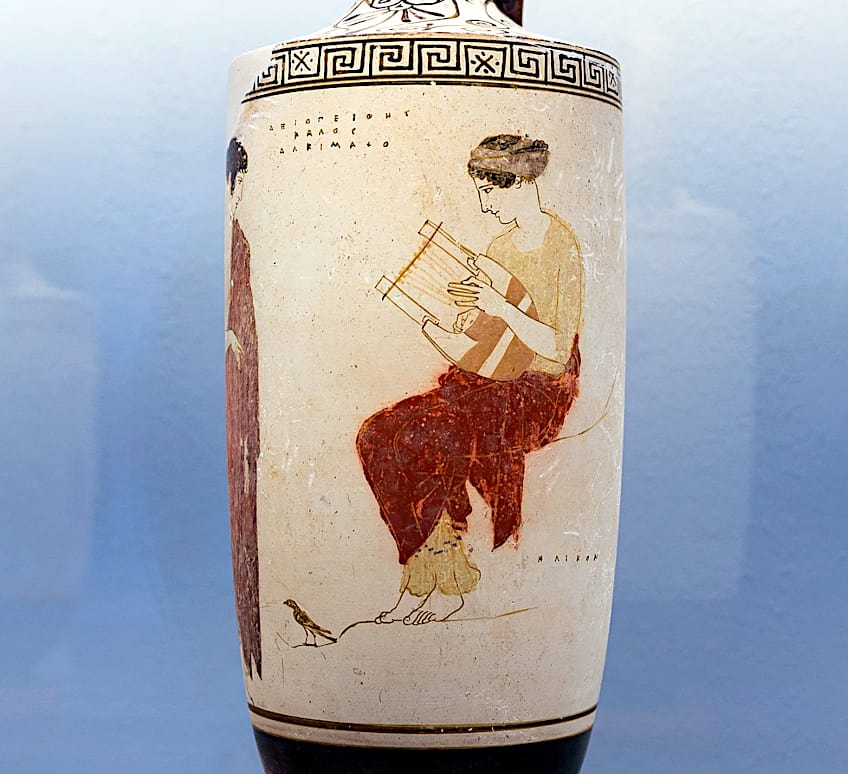
The Muses may no longer be worshiped any longer, but they have remained important as sources of inspiration, and so we will examine them in some depth today. We will start with the names of Muses and what each of them was responsible for.
The Muses Themselves
The actual Muses may have been figures in ancient Greek mythology, but they have become an incredible mainstay over the course of European art and history. These ancient mythological figures have been discussed and depicted for centuries by various figures, and they remain important mythological icons to this day because of their direct connection to the arts.
It is worth looking at all of these nine goddesses of the arts in some depth.
While we generally know the Muses as a collective, they are all individual mythological characters who oversaw their own aspect of the arts. For this reason, we will look at each of the names of Muses and what each particular Muse was meant to oversee in their mythological duties.
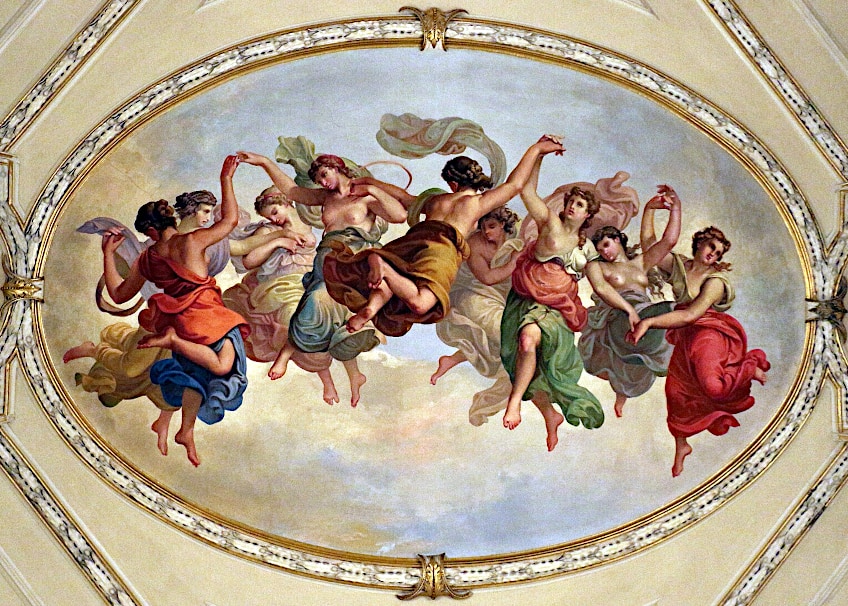
While each of the nine goddesses of the arts may have overseen some aspect of the arts and sciences, they were each positioned behind a specific artform. Thanks to this, some of them have become more prominently depicted than others. However, each of the Muses in Greek mythology was considered to be immensely important to the people of Ancient Greece. They were the origin of much of their culture, and they inspired many artists. So, let’s have a look at each of these nine goddesses of the arts in alphabetical order.
Calliope – Muse of Epic Poetry
| Muse of | Epic poetry |
| Symbol | Writing tablet |
| Parents | Zeus and Mnemosyne |
| Children | Orpheus |
Calliope was one of the most prominent of all the Muses in Greek mythology as she was the figure who presided over Epic poetry. This was also why she was termed by some as the “Chief” of the Muses. The reason that epic poetry is such an important aspect of ancient Greek culture is because it was, in many ways, the bedrock of many of the most notable aspects of their culture.
Calliope, in myth, was also the supposed mother of both Orpheus and Linus.
The former of the two is one of the most important musical figures in ancient Greek mythology, and his voice was meant to exhibit such eloquence and harmony that he was greater than any other singer. The myth of Orpheus formed the basis of of one of the most influential mystery cults of ancient Greece.
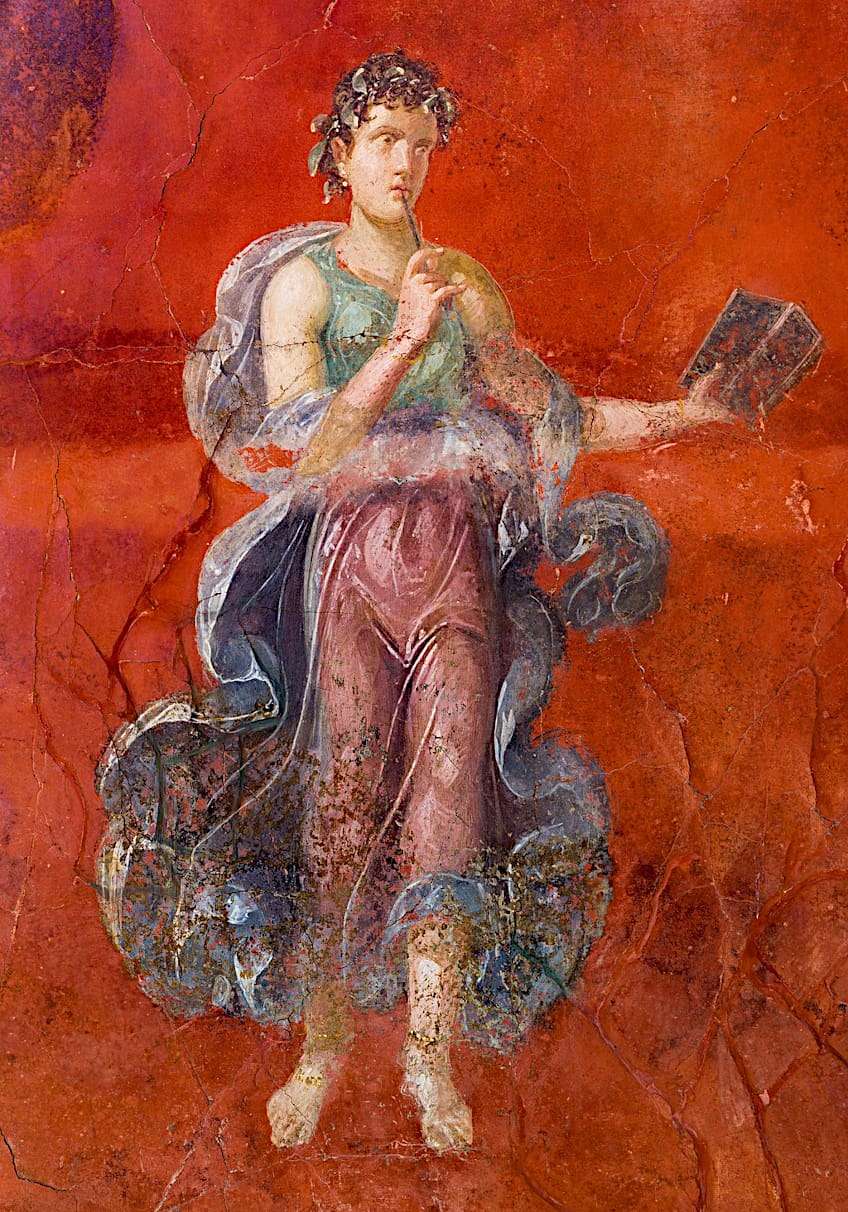
In terms of who Calliope was the supposed muse of in mythical accounts is quite a simple thing. She was the supposed muse of Homer, the most revered of all the ancient Greek epic poets, and the mythical author of the Iliad and the Odyssey. Her mythical role in the establishment of this immensely important literary figure has led to this particular Muse in Greek mythology to be one of the most notable.
Clio – Muse of History
| Muse of | History |
| Symbol | Scroll |
| Parents | Zeus and Mnemosyne |
| Children | Hyacinth |
Clio was considered to be the Muse of history, although there are also a few accounts that portray her as the muse of the lyre too. However, she has become far more closely associated with history. While contemporary thinkers generally do not consider history to be part of the arts, it was quite common for history to be seen as a part of culture and therefore an artform alongside various others.

Whenever this particular Muse is depicted, she is generally shown with parchment, a scroll, or a book (essentially, something to write in), and a trumpet.
She is also often depicted with a crown of laurels, especially because it was a prominent part of her iconography during the Baroque.
In the mythological tradition, she had a son, Hyacinth, but he is not as famous as the sons of Calliope. In addition to this, thanks to the many often conflicting parts of ancient Greek mythology, she has been depicted as the mother of other figures, such as Linus. This is a common issue in much mythology as these stories were often part of the oral tradition and were therefore subject to change.
Erato – Muse of Erotic and Lyric Poetry
| Muse of | Erotic and lyric poetry |
| Symbol | Lyre |
| Parents | Zeus and Mnemosyne |
| Children | None |
Erato is a name that comes from the same root word as another notable ancient Greek mythological figure whose name has since transcended his original purpose, Eros. This may give some indications about what Erato oversaw as one of the Muses in Greek mythology.
Erato was the Muse of lyric poetry, with a specific focus on love poetry.
Whenever she has been depicted, she has generally been shown holding a lyre while wearing a wreath of myrtle and roses. She has also often been depicted alongside turtle doves and has even sometimes been shown while holding an arrow (which further solidifies the connection between her and Eros, as the arrow of desire may come from her).

She has become an important figure amongst the Greek Muses because of her appearing as a figure in various poems and love stories within the ancient Greek tradition. The erotic is often associated with love, and as such, she is an integral figure in the development of the arts that are geared toward love.
Euterpe – Muse of Music and Lyric Poetry
| Muse of | Music and lyric poetry |
| Symbol | Aulos |
| Parents | Zeus and Mnemosyne |
| Children | Rhesus |
Euterpe is another of the Muses in Greek mythology who has an association with lyric poetry, but unlike Erato, she is also commonly associated with music. Euterpe is generally depicted alongside instruments, mostly wind instruments of which she was a supposed inventor.
As the Muse of music and musicians, she was traditionally evoked to aid them in their compositions.
Like the other Muses in Greek mythology, Euterpe is said to have lived on Mounts Parnassus and Helicon instead of Mount Olympus, but alongside Apollo as god of music, they provided entertainment for the Olympian gods. However, thanks to the aforementioned oral tradition of Greek mythology, they are also sometimes placed on Mount Olympus. However, her role as a great artist never alters.

Melpomene – Muse of Tragedy
| Muse of | Tragedy |
| Symbol | Tragic mask |
| Parents | Zeus and Mnemosyne |
| Children | The Sirens |
Melpomene is one of the most important Muses in Greek mythology in drama because of her association with tragedy. In some of the earliest stories that relate to her, she was the Muse of the chorus, but she started to shift to be seen as the Muse of tragedy instead. This has become the predominant way in which she is depicted to this day.
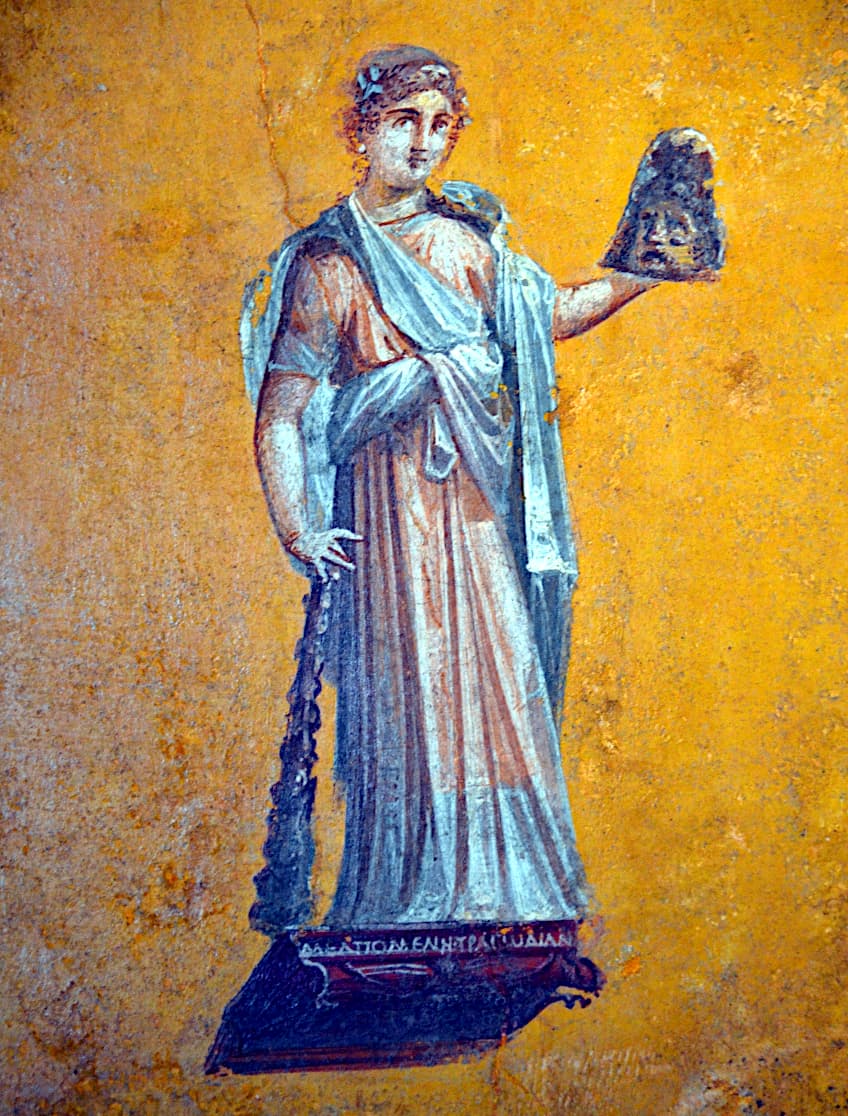
Thanks to her association with the dramatic tragedy, she is often depicted wearing a tragic mask and the boots that were traditionally used by actors in tragic theater. She is also often shown with a knife or club in one of her hands. Her role in tragedy would have made her important in the many theatrical festivals held in Ancient Greece.
According to some myths, Melpomene was the mother of the monsters known as Sirens.
These tragic figures are perhaps best known for luring sailors to their deaths through their beautiful songs. The Muse of tragedy is the perfect entity to serve as the mother of some of these famous mythical creatures.
Polyhymnia – Muse of Hymns and Sacred Poetry
| Muse of | Hymns and sacred poetry |
| Symbol | Veil |
| Parents | Zeus and Mnemosyne |
| Children | None |
Polyhymnia, as her name suggests, was the Muse of hymns and other sacred poetry. In addition, she has an association with the pantomime as well as agriculture. While the latter association may seem strange, keep in mind that many sacred festivals and rituals where hymns would be sung, were closely allied to the agricultural calendar.
Ancient peoples relied on the gods to keep droughts, floods, and other impediments to raising and harvesting their crops at bay.
She is usually depicted in a more pensive manner with a finger to her mouth, a veil and cloak over her, and her elbow leaning on a pillar. Her more restrained nature translates to her patronage of sacred poetry.
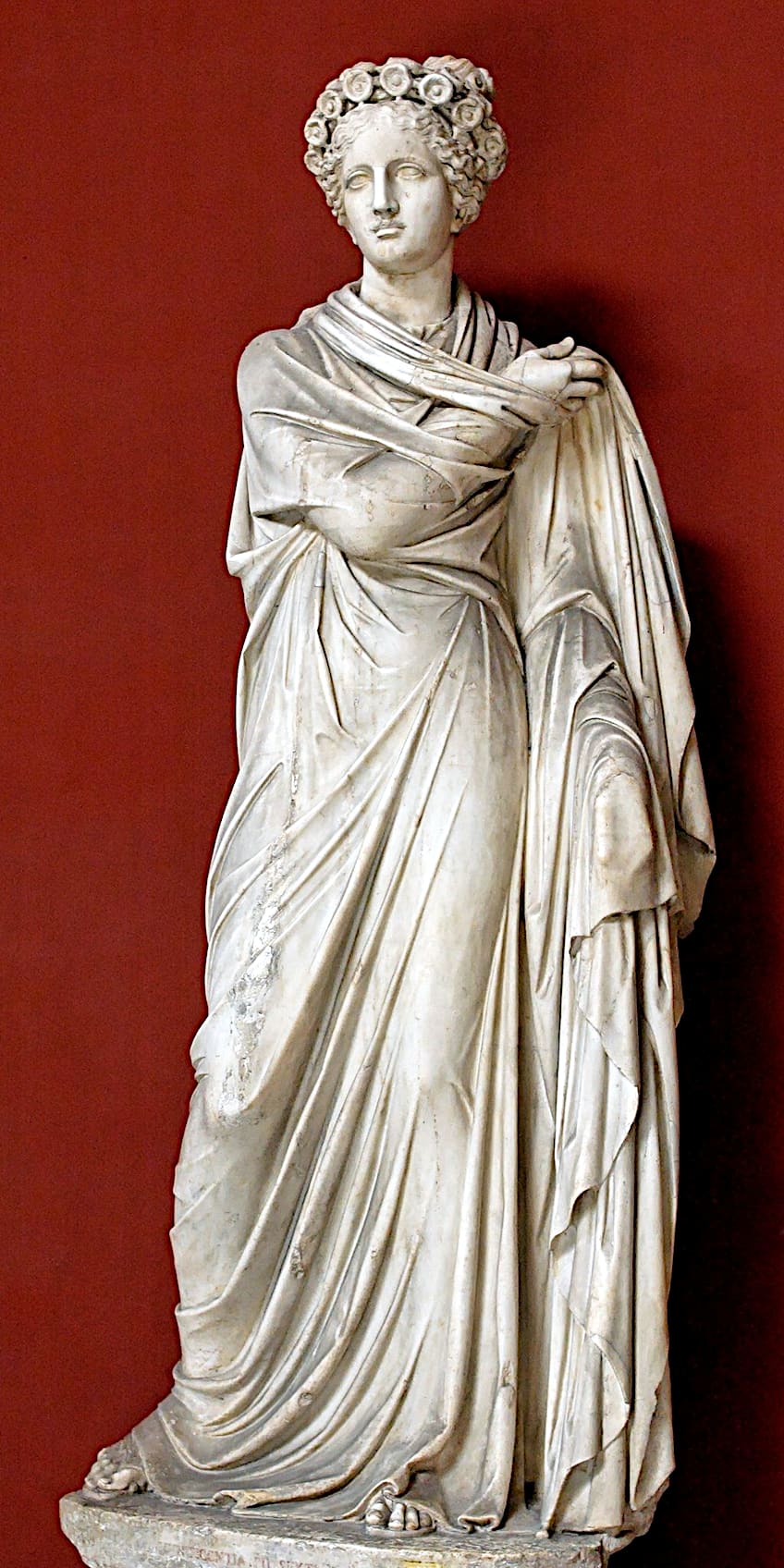
Terpsichore – Muse of Dancing and Chorus
| Muse of | Dance and the chorus |
| Symbol | Lyre |
| Parents | Zeus and Mnemosyne |
| Children | The Sirens |
Terpsichore is the Muse of dancing, although she is also often associated with the chorus, which is a now lesser-known aspect of Greek drama. In antiquity, choral groups of people singing and dancing formed a major part of various cultural and religious festivals.

Whenever she is depicted in the arts, she is usually shown to be sitting down while holding a lyre as it was a common instrument used in creating music for dancing. Her role as the Muse of dancing would have integral importance in dramatic fields as dance was a common part of these arts.
Terpsichore was another of the Greek Muses described as mother of the Sirens, and in some myths, she the mother of Biston the Thracian king.
Thalia – Muse of Comedy
| Muse of | Comedy |
| Symbol | Comic mask |
| Parents | Zeus and Mnemosyne |
| Children | The Corybantes |
Thalia is another of the Muses in Greek mythology that is strongly associated with ancient Greek drama as she is the Muse of comedy. In addition, she is often associated with idyllic poetry, which shares some roots with comedy as a more pleasant and entertaining part of the arts over many of the more tragic forms.
She was generally portrayed with a comic mask, a crown of ivy, boots, and sometimes a trumpet. She was said to support actors as they performed.
Thalia is not as commonly depicted as some of the other Muses. In terms of her own children, she was supposedly the mother of the Corybantes (while the father was Apollo).

Urania – Muse of Astronomy
| Muse of | Astronomy |
| Symbol | Glove and compass |
| Parents | Zeus and Mnemosyne |
| Children | Linus |
Urania is the Muse of astronomy, and so those who were inspired by her were those who studied the heavens. Urania was credited with inventing the globe and a compass, which are important tools in understanding the stars above us.
She is often depicted with a star-embroidered cloak, her eyes affixed to the heavens, and a celestial globe. In much of modern art, she is often shown with stars above her head.
Her name derives from her great-grandfather, Uranus, the primordial god of the sky. She is said to have inherited immense power from her father, Zeus, who is also associated with the sky. Her divination abilities inspired many philosophers.
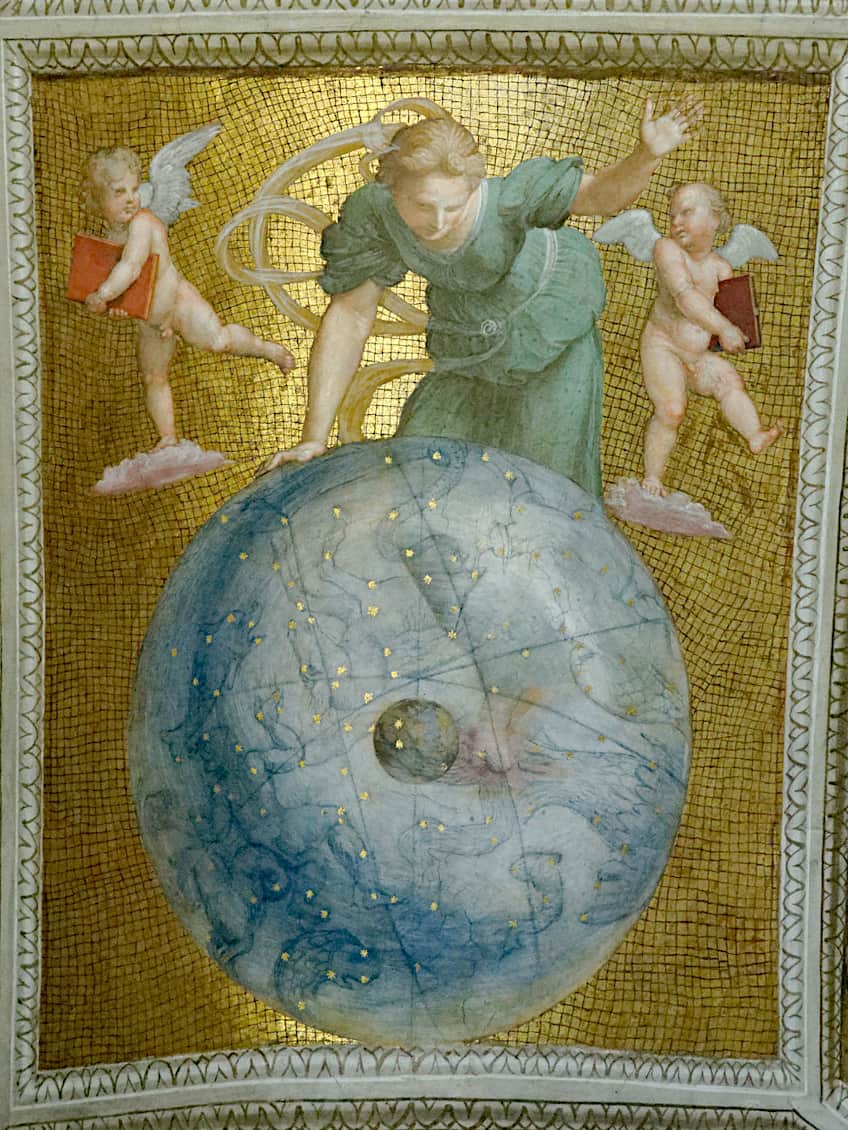
Legends and Stories of the Muses
The primary divine attribute of the Muses in Greek mythology as a collective is their role as figures of inspiration. They were said to directly influence artists and those who were interested in knowledge, and they instilled a passion within artists to create something that could become a great work of art.
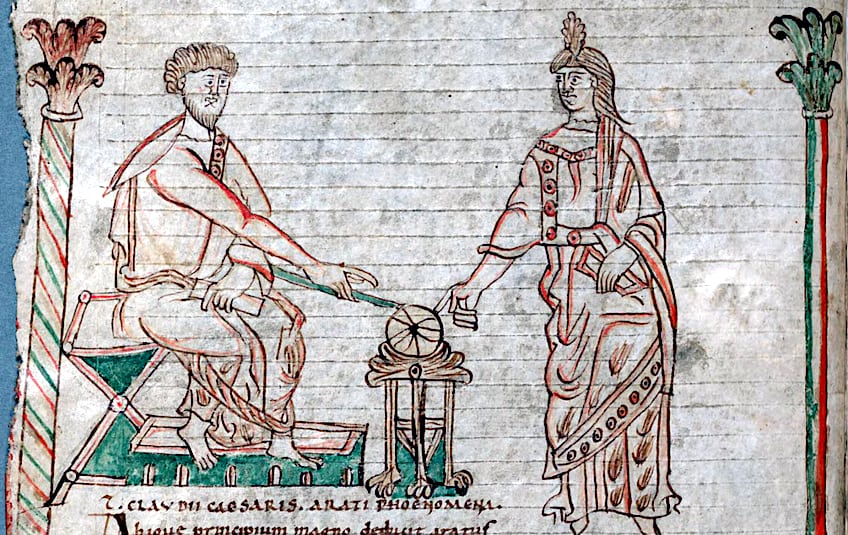
For this reason, the Greek Muses were often invoked by a variety of figures from different fields. Poets, dancers, writers, musicians, historians, philosophers, and scientists all called upon the Muses to aid them in understanding the world and recording it in some way that would contribute to the totality of human knowledge and artistry.
Over the centuries, many figures have supposedly been influenced in some way by the Muses, such as William Shakespeare addressing the Muses in A Midsummer Night’s Dream or Ludwig von Beethoven making use of a variety of ancient Greek myths, including the Muses, in much of his work.
These aspects of inspiration were likely more cultural than religious, as the ancient Greeks may have believed, but the inspiration still remains. However, from a more religious perspective, the Muses in Greek mythology were immensely important to the culture of ancient Greece, and as such, some of the most important poets and artists in that culture were directly inspired by these figures as actual goddesses of the arts.
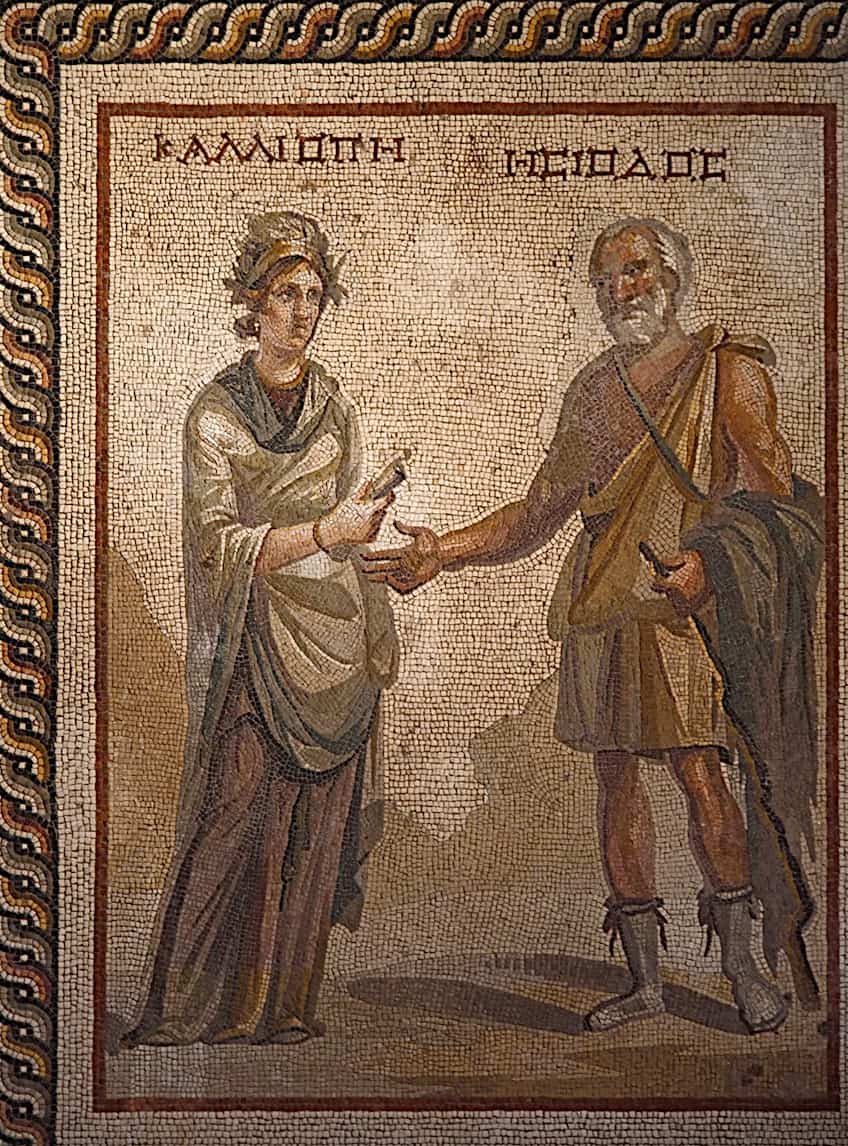
The Muses in Greek Mythological Works
The Muses in Greek mythology may have been important figures in the development of much of ancient Greek art, but they were also directly referenced and found within pieces of art from ancient Greece. For instance, the Greek Muses are directly mentioned in Homer’s Iliad and Odyssey when the famed ancient Greek poet directly invoked the Muses to aid him in telling the stories that he wished to tell through his epic poems. He asked for their divine intervention.
Furthermore, the Muses can be found in the work of Hesiod, another ancient Greek poet and the first known source of their number as nine.
His work, Theogony, is directly related to the origins of the gods themselves, and he claims that he met the Muses when he was tending to his flock as a shepherd. They supposedly told him about the genealogy of the gods, and that would be immensely important in understanding and writing about them as figures in what was a widely-practiced religion at the time.

Aside from these ancient figures in Greek art, the Muses have also been depicted in sculptures and paintings, such as the Muses Sarcophagus (2nd century CE), a Roman sarcophagus that is now in the Louvre or the Parnassus fresco (1509 – 1511) by Raphael which depicts the Muses. These are only two examples of later works that depict the Greek Muses. The Muses have gone on to be an inspiration for many artists throughout the centuries.
Temples and Sanctuaries Dedicated to the Muses
The Muses in Greek mythology were gods, and as such, there were locations that were dedicated to them as places of worship in ancient Greece. While they may no longer be worshiped as actual gods who could have an actual influence on actual artists, the places where they were worshiped have remained important in understanding ancient Greek mythology.
One of the most important of all of these locations was the aptly named Valley of the Muses.
This location could be found beside Mount Helicon, and it was the location of an important Muse-oriented festival called the Mouseia. Every fifth year, this festival was held to honor them and there were various games and contests held there. The central temple contained statues of the Muses, but they were later removed by Constantine the Great to Constantinople.
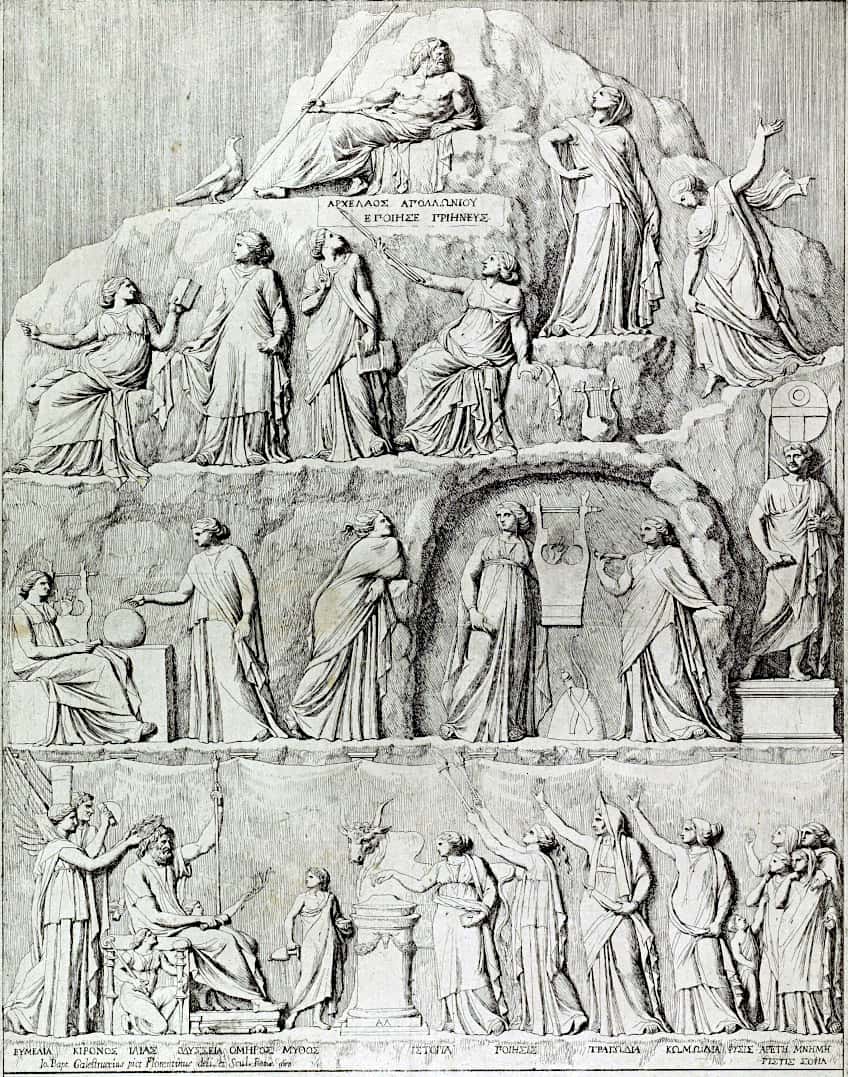
Another important location was the Temple at Delphi. While this particular temple is far more associated with Apollo, the Muses were considered to be immensely important for knowledge, and so there was a shrine in Delphi meant to be a place for learning and composition of poetry. Many historical figures gathered at this location, including Sophocles and Euripides. There were also locations dedicated to the Muses in many major cities and locations, from Athens to Sparta.
At these locations, the Muses were generally worshiped through various offerings and rituals. This was common for practically every god, and there would be sacrifices (of both animal and non-animal varieties), recitation of poetry and hymns in their honor, dances, and libations poured out as ritual offerings.
While the Muses were worshiped, they were also integral to the many festivals that formed part of ancient Greek culture. The Mouseia has already been mentioned, but they also formed an integral part of festivals such as the drama-oriented Dionysian festival, the musical and athletic Pythian Games, and the contests such as the Panathenaia. As the nine goddesses of the arts, the Muses and their influence on culture and art is understandable.
The Muses in Modern Culture
The Muses in Greek mythology have remained some of the most important figures in the mythological tradition of an already immensely important culture. For this reason, the Greek Muses have remained important in the arts. For instance, there are direct sources of inspiration that can be seen in groups, such as the band Muse (which is literally named after these nine goddesses of the arts).
Other important pieces of popular culture that make use of the Greek Muses in some way include the Margaret Atwood novella The Penelopiad, which is a retelling of the story of Odysseus from the perspective of the famous figure’s wife, or the John Keats poem Ode to Psyche, which is a tribute to the Muses. Perhaps one of the best more contemporary examples is the Disney film Hercules, which depicts the Muses as important figures that narrate the story of Hercules to the audience.
With the exception of small groups of Neo-pagans, Muse-worship no longer occurs. The modern usage of the word “muse” refers to an aspect of the creative process, or to denote a relationship between a creative individual and someone they credit as a source of inspiration.

The contemporary understanding of the term “muse” is generally a metaphor, but there have been a number of figures who have claimed that certain individuals have been muses to them in some or another sense. However, in this sense, it is less of a mythical reasoning and more of a form of love and adoration that an artist may wish a certain person to have for them that spurns them to create.
And at last, we come to the conclusion of our discussion about the Muses in Greek mythology. We have examined the names of Muses, what each Muse was responsible for, how they influenced various figures, and how they are still seen to this day. Each Muse of art has their own story and place in ancient Greek mythology, but their depiction has influenced countless artists throughout the centuries, and there will likely be depictions of them further into the future.
Take a look at our muses in Greek mythology webstory here!
Frequently Asked Questions
What Are the Muses in Greek Mythology?
The Greek Muses are a collection of nine goddesses of the arts. Each of the Muses was a separate god that oversaw some aspect of poetry, drama, dance, or music, and they were also seen as important figures in the acquisition and development of knowledge. One of the principal aspects of their mythological duties was to serve as an inspiration for artists.
Who Are the Muses in Greek Mythology?
There were nine different Muses. In alphabetical order, they were Calliope, Clio, Erato, Euterpe, Melpomene, Polyhymnia, Terpsichore, Thalia, and Urania. Each of these Greek Muses oversaw some aspect of the arts, such as Calliope serving as the Muse of Epic Poetry, and Urania overseeing astronomy and astrology.
Who Was Supposedly Blessed by the Muses?
There are various mythological figures who were supposedly inspired or directly related to the Muses, such as Orpheus, who was famously able to tame Cerberus, the three-headed dog who guarded the gates of Hades, with his music. However, celebrated poets such as Pindar and Homer were considered to be so great that the Muses must have had a hand in inspiring their great works.
Are There Still Believers in the Muses from Greek Myth?
Most people see the Muses in a more metaphorical sense in the modern day, but there are still some artists who identify with specific Muses or pay homage to them in some way. However, actual believers in the religion of ancient Greece are few and far between in the modern era, but that does not necessarily mean that there are none at all. There may be a few who still believe, but not many.
What Is the Modern Use of the Term Muse?
A muse, as it is meant in modern usage, is a metaphorical person or thing that serves as an inspiration for artists. This could be an actual person who, in some way, instills a certain creativity within an artist, but it can also be something more intangible. For instance, an artist may call other works of art a muse for their own work, as it was such a strong inspiration for them.
Justin van Huyssteen is a freelance writer, novelist, and academic originally from Cape Town, South Africa. At present, he has a bachelor’s degree in English and literary theory and an honor’s degree in literary theory. He is currently working towards his master’s degree in literary theory with a focus on animal studies, critical theory, and semiotics within literature. As a novelist and freelancer, he often writes under the pen name L.C. Lupus.
Justin’s preferred literary movements include modern and postmodern literature with literary fiction and genre fiction like sci-fi, post-apocalyptic, and horror being of particular interest. His academia extends to his interest in prose and narratology. He enjoys analyzing a variety of mediums through a literary lens, such as graphic novels, film, and video games.
Justin is working for artincontext.org as an author and content writer since 2022. He is responsible for all blog posts about architecture, literature and poetry.
Learn more about Justin van Huyssteen and the Art in Context Team.
Cite this Article
Justin, van Huyssteen, “The Muses in Greek Mythology – Patrons of the Arts and Sciences.” Art in Context. October 11, 2023. URL: https://artincontext.org/the-muses-in-greek-mythology/
van Huyssteen, J. (2023, 11 October). The Muses in Greek Mythology – Patrons of the Arts and Sciences. Art in Context. https://artincontext.org/the-muses-in-greek-mythology/
van Huyssteen, Justin. “The Muses in Greek Mythology – Patrons of the Arts and Sciences.” Art in Context, October 11, 2023. https://artincontext.org/the-muses-in-greek-mythology/.


